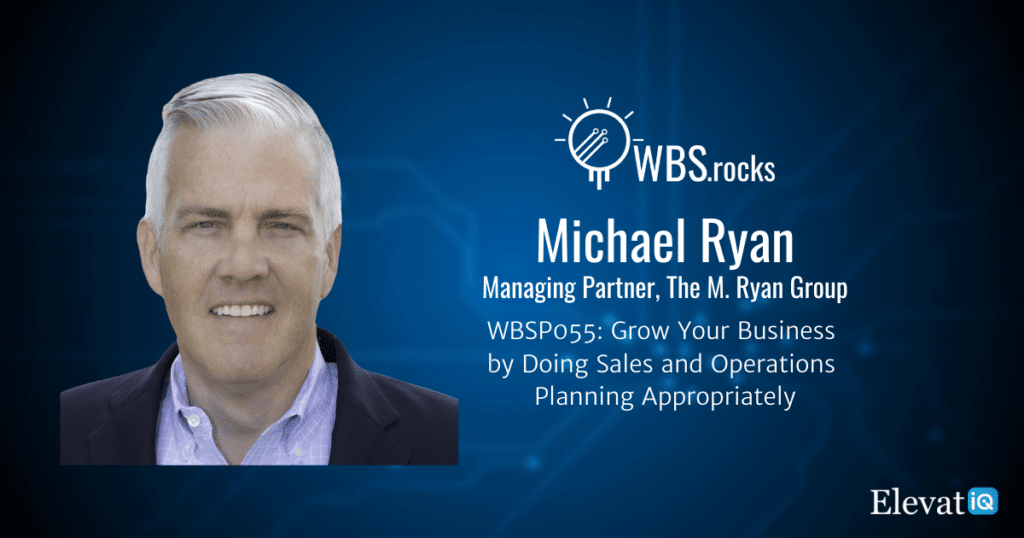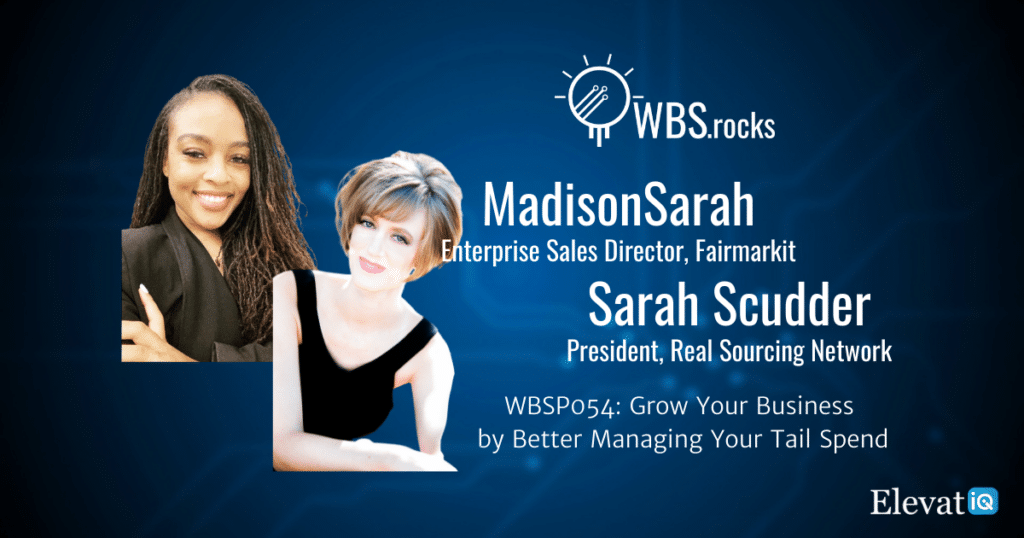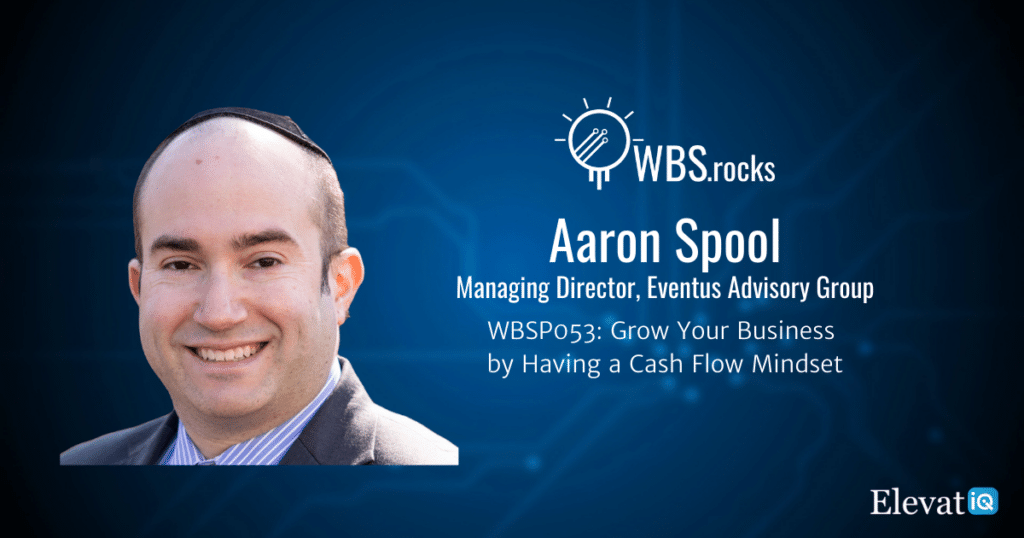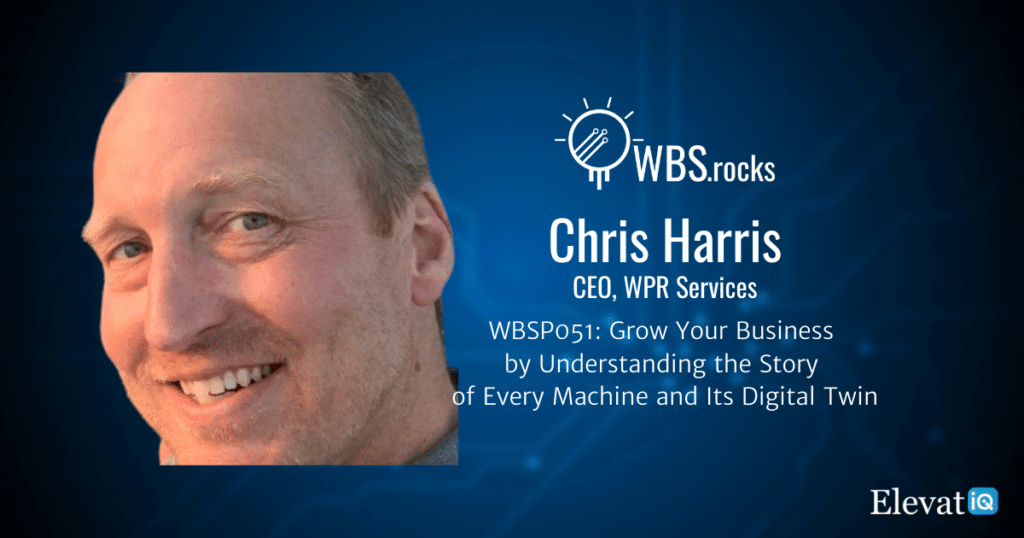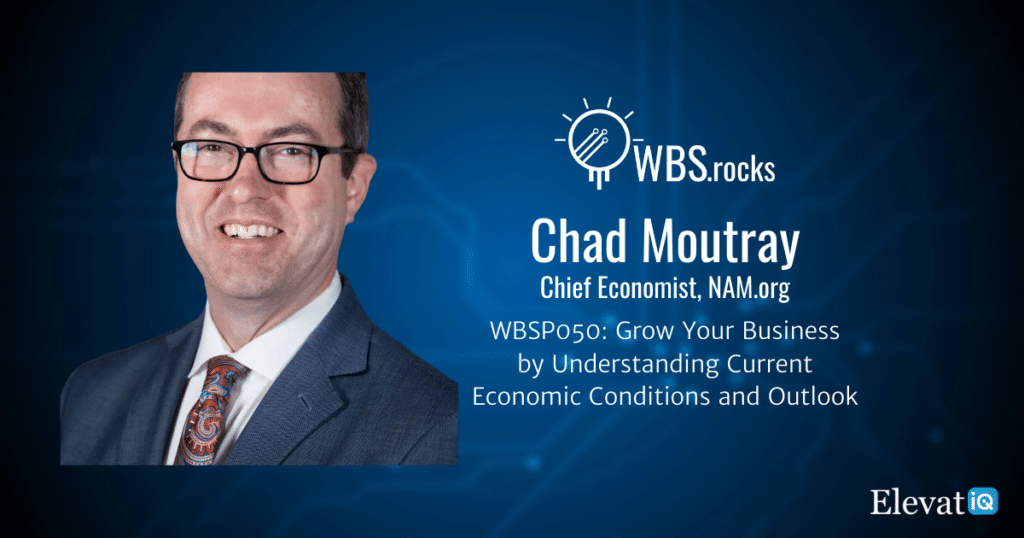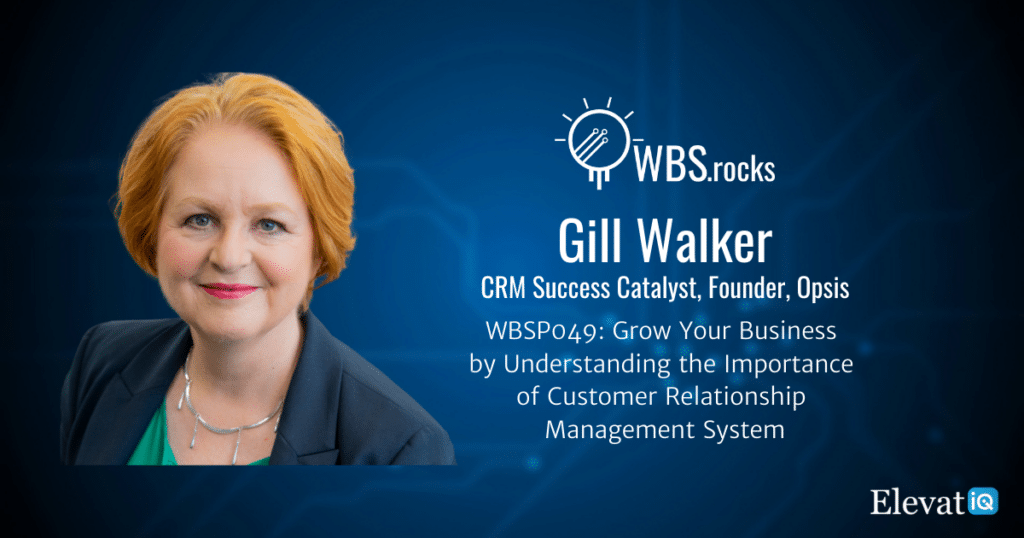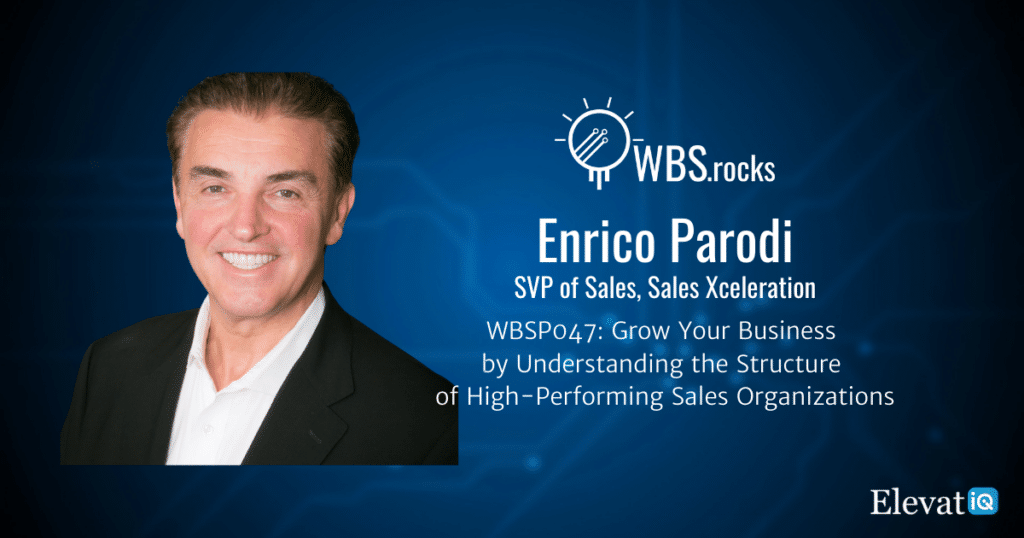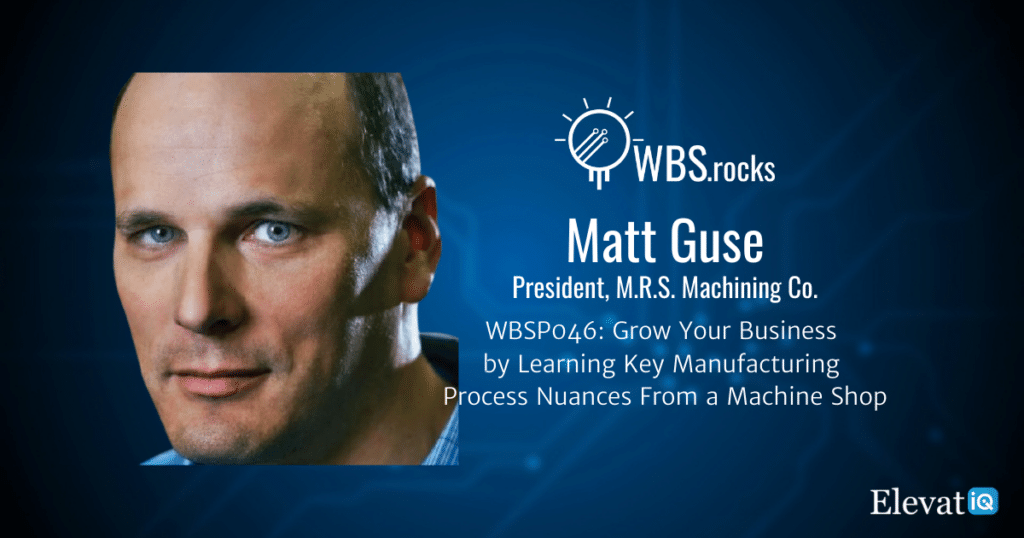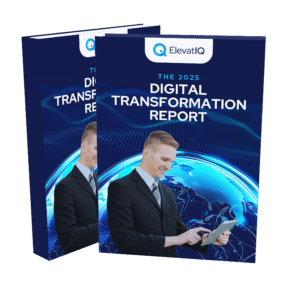WBSP055: Grow Your Business by Doing Sales and Operations Planning Appropriately w/ Michael Ryan
In this episode, we have our guest Mike Ryan, who discusses how to do S&OP planning appropriately for a growing business. He also discusses his lessons learned from various KPIs pertaining to sales and operations planning and how to streamline them to maintain appropriate levels of inventory and cash. Finally, he shares his insights into several inflection points of growth for businesses and their needs for proper S&OP systems.
Chapter Markers
- [0:15] Intro
- [2:42] Personal journey and current focus
- [8:38] Perspective on growth
- [10:18] What is S&OP planning?
- [16:04] The implications of poor S&OP planning
- [19:22] On-time delivery and absorption
- [22:48] The accuracy of S&OP metrics
- [26:21] Tracking scheduling on the spreadsheet
- [30:34] Planning issues due to the complex product mix of SMB businesses
- [33:33] Closing thoughts
- [35:12] Outro
Key Takeaways
- S&OP planning takes the needs of sales, balances the demand against the supply that manufacturing provides, and then works with finance to make sure it meet the needs of the business.
- The two metrics that drive the S&OP process are: 1) on-time delivery 2) absorption. And sometimes, these metrics can align, but most often, they don’t. So one way to have really high on-time delivery is to have a ton of inventory. Now while on-time delivery can be exceptional. If you use that bloated inventory method, your cash flow and your working capital are going to be horrendous.
- If you’re using past dues to measure your business, you’re measuring the wrong thing. It needs to be your on-time delivery? Here’s the date. I said I was going to ship it. Here’s the date I actually shipped it. Did I hit it? Did I miss it? It’s very simple. It’s a very simple metric.

Subscribe and Review
Apple | Spotify | Stitcher | Google Podcasts | Deezer | Player FM | Castbox
About Mike
Mike Ryan has freed up more than $275 million dollars from inventory across his career, unlocking piles of cash for his clients that are often hiding in plain sight. Besides being an “inventory iceberg crusher” Mike is seen as an “EBITDA Engineer.” As a GE trained & certified Six Sigma Black Belt with more than 25 years of experience, he has solved inventory issues for both middle market and Fortune 500 businesses, translating into optimized inventory, customer satisfaction, improved cash flow, and EBITDA.
Resources
Full Transcript
Mike Ryan 0:00
It was a forecast of trying to predict for the grocery store how many of each I needed to order on a daily, weekly, monthly basis. I would lose my mind if I tried to do a spreadsheet. It would not be practical and without the cost of managing it.
Intro 0:15
Growing a business requires a holistic approach that extends beyond sales and marketing. This approach needs alignment among people, processes, and technologies. So if you’re a business owner, operations, or finance leader looking to learn growth strategies from your peers and competitors, you’re tuned into the right podcast. Welcome to the WBS podcast, where scalable growth using business systems is our number one priority. Now, here is your host, Sam Gupta.
Sam Gupta 0:51
Hello, everyone, welcome back to another episode of The WBS podcast. I’m Sam Gupta, your host, and principal consultant at a digital transformation consulting firm, ElevatIQ.
As your business grows, it’s hard to find that Goldilocks zone of inventory so that you neither lose on opportunities nor lock your cash down. S&OP planning is easier said than done. The problem becomes even more complex when you might have a high mix of your products, especially if you might be planning your KPIs manually or on a spreadsheet.
In today’s episode, we have our guest Mike Ryan, who discusses how to do S&OP planning appropriately for a growing business. He also discusses his lessons learned from various KPIs pertaining to sales and operations planning and how to streamline them to maintain appropriate levels of inventory and cash. Finally, he shares his insight into several inflection points of growth for businesses and their needs for proper S&OP systems.
Let me introduce Mike to you.
Mike Ryan has freed up more than $275 million from inventory across his career, unlocking piles of cash for his clients that are often hiding in plain sight. Besides being an inventory iceberg Crusher, Mike is seen as an EBITDA engineer, as a GE trained and certified Six Sigma Black Belt with more than 25 years of experience. He has solved inventory issues for both middle market and fortune 500 businesses, translating into optimized inventory, customer satisfaction, improved cash flow, and EBITDA.
With that, let’s get to the conversation.
Sam Gupta 2:36
Hey, Welcome to the show, Mike.
Mike Ryan 2:39
Thank you, Sam. It is so good to be here with you.
Sam Gupta 2:42
I’m so excited to discuss the inventory because that is always a problem during my engagement that I do with ERP. So I am super passionate to learn about that. But before we get there, do you want to start with your personal story and current focus, Mike?
Mike Ryan 2:57
I would love to. Thank you, Sam. So I am a ceramic engineer by trade. And right out of college, I went into the most traditional of ceramic industries in that I made sinks and toilets. And it was during that period of my career that I really started to understand the process. Yeah, from there, I had an opportunity to join GE superabrasives, in which we made industrial diamonds. The way I like to describe it is I went from making a product that everybody needs and toilets to a product that everybody wants with diamonds.
With GE, that’s really where I got that six-segment training. The idea of having a process that’s definable, predictable, and repeatable really got hammered into me. And what I learned is that processes are transportable. So when that GE division was sold, I had a decision to make, so I try and stick around with the business? Or do I make my own way. And from there, I leveraged the process experience to get into Good Year, Good Year Tire and Rubber. Actually, in corporate finance, the finance process needed process.
Mike Ryan 4:08
So it needed really an overhaul to dig into what was working well, what they need to do more of, and what they needed to do less of. Yep. And after a couple of years of that, I said, Okay, this is great. I’ve learned a ton about the business and one and a ton about finance.
But I want to get back to my roots in manufacturing and supply chain, and operations. And it was at that point that I was introduced to S&OP planning. And the process spoke to me because it had all the functions represented. It had sales, manufacturing, supply chain, procurement, marketing, finance, all sitting around the table, you know, talking at a level to really understand here’s where we want the business to go, set the strategy and then begin to work in here are the things we need to do on a regular cadence to keep the business moving, and for me, That was really where I started to get the understanding of how critical inventory was and how inventory tied to cash flow.
Mike Ryan 5:09
So once we got the process to where it was steady-state externally class, a certified S&OP planning. The other thing I learned about myself, Sam, is I am not a good maintainer for me. I’m the guy you call when your car’s in the ditch. I will get you out of the ditch. I will get you up on the road, put you on the right path, get you off and running.
Yep, keeping the car between the guide rails or simply managing the business. To me, that’s better handled by somebody else. So I went looking for my next opportunity. And it came with a S&OP planning business called Carlisle break, and friction was looking to implement the global process. And I said, This literally has my name written all over. I worked on an interview with the president of the business. He said you’re the right guy for this.
Mike Ryan 5:55
And with S&OP, it really comes in under that umbrella. It gave me an opportunity very early to understand the business from stem to stern spent a couple of years with Carlisle and then went to a small family office-owned business.
And it was really then that I realized these corporate big company best practices could absolutely be leveraged in smaller businesses. And it didn’t need 100 people deep worth of resources. It really just needed key representation from each of the functions and having meaningful conversations that were metrics-driven to get everybody working together.
And from there, that business served the oil and gas industry very, very heavily. And when the oil and gas bubble popped that business to some extent, pop, so I found myself saying, okay, I can put my hand, and I can put my fate in the hands of others, or I can figure out and make my own way because I realized I had something to give, especially for those middle-market businesses, those businesses that we’re a publicly-traded word on the stock exchange, but made up of regular good people that may not have that exposure to these best practices.
Mike Ryan 7:17
And Sam, how I got to inventory was, yeah, I literally printed out 20 years’ worth of resumes, and I looked for the common themes, and common threads, one of them was six sigma and lean, continuous improvement.
I’m like, okay, but that really doesn’t. I didn’t feel like that had a hook, where I started digging deeper. I see American Standard inventory, Goodyear $200 million worth of inventory, Carlisle, $65 million, and on and on.
And I’m like inventory is the common thread because to me, inventory is an output. And you can shape that output by understanding the balance between supply and demand. So that, for me, was how I got into inventory because I realized that there are so many businesses out there that struggle. Either they’ve got too much inventory, and it kills their cash flow, or they don’t have enough of the right inventory at the right time.
And then they end up with very, very unhappy, angry, frustrated customers. So to me, it was that natural fit that natural progression between S&OP planning as the umbrella and inventory as the link to cash that I said, This is my mission, I want to go out and help as many businesses I can not only deliver on their customer needs but deliver on the needs of the business itself.
Sam Gupta 8:38
Okay, amazing. And I cannot agree more inventory is definitely the heart of the business. And sometimes, people say that this conversation is slightly biased. But I have seen this in the ERP implementations as well, that if you don’t get inventory right, then obviously your organizational view or the MRP view is most likely is not going to be right.
So on that note, I am going to start with the next question. And the next question is very standard. And that is going to be a perspective on growth. So Mike, what does growth mean to you when you think of this keyword?
Mike Ryan 9:11
So how inventory relates to growth for me, Sam, is that if you don’t have the right product at the right time, no matter how fantastic your product is, you’re not going to have the revenue to grow the business, you’re not going to have the profits to grow the business, whether you’re a manufacturer or distributor understanding that having the product the customer wants when they want it.
Ultimately, that’s job one because if you don’t have something in stock, customers are simply going to go someplace else. I mean, it really is that simple. So if I’m on Amazon and I’m looking at a spatula or a sieve or houseware, and I go to buy it from Company A, and they don’t have it, I’m just going to go to Company B even if Company A has my preferred color.
If it’s not stock, right, I’m going to pick the purple one that I know I can get tomorrow. So really, just as quickly as I can tell the story, that’s as quick as decisions are made. And if you don’t have the right product at the right time, you’re not going to have the revenue. And quite frankly, you’re not going to have a business.
Sam Gupta 10:18
Yep, I agree. Okay, amazing. So now the next question I’m going to have Mike is going to be around the S&OP planning. So I know that let’s say, in the inventory world, and a lot of manufacturers might be familiar with that, right? They might sort of know that what S&OP planning is, but I don’t know how many people know to do it well, so touch on what S&OP planning is, that is number one, you can answer this question in the form of any stories that you have seen where the company sort of knew that they were doing the S&OP planning.
But the planning wasn’t as you would like to do as an S&OP consultant. So tell us what S&OP planning is? And what are some good ways of doing it? And what are some not so good ways of doing it that you have seen in your experience?
Mike Ryan 11:13
So starting with what a good S&OP planning process is, it begins with the customer. It begins with demand and sales saying, Hey, I know my customer, I know how many I can sell, I know how many I need and then turning around to manufacturing and saying, hey, I need this many of product A, this many product B, this many products to see manufacturing that saying I can do that I can build a supply plan to meet the needs of sales.
And then ultimately, it’s looking to see financial sales, the top-line revenue manufacturing ultimately creates the bottom line cost, does that produce the profit that the business needs? So in 30 seconds or less, S&OP planning takes the needs of sales, the demand brings it up against the supply that manufacturing provides, and then works with finance to make sure does it meet the needs of the business?
Now, let’s start with the S&OP done poorly. I’ve got plenty of stories there. That’s probably the easier one to tell you. I was working with a business where every year they went to a big industry show and touted, hey, we’ve got this new innovative product.
Mike Ryan 12:29
This is what’s new, this is the product of the year, and the dealers and the wholesalers and the distributors would put their orders in the right at the show and then wait with bated breath for the manufacturer to deliver.
And guess what? The manufacturer did it. It would take 30-60-90 days before their first orders would even begin to ship. So what would happen is, year, after year has the big annual industry show dealers will put orders in knowing that the business was not going to let them down.
And over time, what happened was this business was losing business to their competition. Even though the competition’s products weren’t as innovative, weren’t as on-brand for what the market needed. They were the business. It was losing revenue simply because they couldn’t deliver.
So, in this case, this happens to be tires, something near and dear to my heart. And coupled with the annual giant auto show is hey, here’s the newest tire technology, the latest, the greatest, and people were excited.
They’re like, Hey, this is what’s new, this is going to deliver better form fit function. I know I can sell these. The car owners are gonna love these. I want these tires and the way the business was planning, or I would actually be more accurate to say the lack of planning.
Yeah, they wouldn’t start building these tires until the orders started coming in, which meant they were already late. Sam, they were late at the moment they took that first order. And then what would happen was they would end up with six months worth of the old tire and zero months of the new tire.
Mike Ryan 14:07
Okay, and wondering why profits were down. So what we did was we said hey, sales and marketing. We know today when the car show is next year, we know what the destination is. Let’s work backward and say six months prior to the launch of this new tire. We need to start burning down, consuming our old inventory, and start ramping up and filling the pipeline with the new inventory.
So we developed it as a phase-in phase-out process. So we were consuming inventory that in the past would not have sold, and we were building up inventory to fill the pipeline’s so the moment that annual auto shows the date showed up on the calendar, the business was able to say we have two weeks of inventory for you in stock with your name on it.
May I please have your order? And by having the new product in inventory to back up the sale, Sam, it went through the roof. That was one of the best years this business ever had simply because they had communications linking sales, marketing operations.
Mike Ryan 15:19
And they began with the end in mind, we know when the show was next year, let’s use that and plan backward and not be surprised on the day of the show when we hit quarters for our new products. So that was a case where taking what we knew and knowing that there literally was a day circled on the calendar helped us plan, and it got the communication going in a very structured way to understand, hey, this is the outcome we’re trying to achieve.
This is the potential both in terms of cash from the inventory that’s going to get consumed, as well as the new revenues, the growth that’s going to be generated. And this all happened under that umbrella of S&OP planning.
Sam Gupta 16:04
Okay, so I would like to go one level deeper into the story and some more colors. Okay. So when let’s say you were doing this S&OP planning before making the changes before going to the annual auto show, what were the kinds of metrics that they were tracking? What were the flaws in the method that they were utilizing for the S&OP planning? What was the disconnect?
Was the disconnect primarily from the communication perspective? Was the disconnect primarily from the inventory planning perspective? And was there just misalignment in the organization? So go one or two levels deeper into the story and provide as much color as you can to the story. Can you do that?
Mike Ryan 16:44
I can. So initially, this was when the S&OP process was relatively new and not very mature. The two metrics that were driving the process, one is on-time delivery. And then the other one was a manufacturing metric of absorption. And sometimes, these metrics can align, but most often, they don’t. So one way to have really high on-time delivery is to have a ton of inventory is to just literally stuff the pantry with as many pieces, parts, and products as you can. Now while on-time delivery can be exceptional. If you use that bloated inventory method, your cash flow and your working capital are going to be horrendous.
Mike Ryan 17:28
The other driver, in this case, you know, manufacturing, was looking at absorption. They were looking at utilization. And in that case, you know, manufacturing tries to make as many as possible as quickly as possible to lower the per-unit cost.
So if it costs me $10 an hour in fixed overhead, if I make ten parts, that means I have $1 per part overhead. If I can make 100 parts. Now I’ve got a 10 cent per part overhead. So the absorption looks fantastic.
So if you’re measuring absorption, your absorption is through the roof. But the second-order impact or the unintended consequence is your cash flow just goes down tubes.
So it was stepping back and saying, Hey, we can get to really great on-time delivery rates by making sure we have enough inventory, not too much inventory, just enough of the right inventory, and then stepping back from using absorption in manufacturing as the primary driver to a different metric that we call schedule adherence.
Mike Ryan 18:40
So if I give you a schedule, and that schedule has five different items and the quantities for those five items, how well did you manufacturing do in hitting that schedule, right. And the goal with the schedule is to make what the schedule says not too few, not too many.
We want you to make what the schedule says. So by shifting the metric for manufacturing absorption to schedule adherence, it really drove the plant to make what sales said they needed, what the customer demand created. So by shifting the metrics a little bit, digging into that second level metric really helped the process get in line and make the right stuff at the right time.
Sam Gupta 19:22
Okay, amazing. So now we are going to be talking about the two terms that you have been speaking a lot, and that is going to be on-time delivery and absorption. And I’m not even sure if all of my audience is going to be familiar with these terms. So can you describe them a bit more? And can you describe how this is going to be applicable in different industries?
Mike Ryan 19:44
Okay, so as for on-time delivery, you have the product that the customer wants when they are ready to order it, so if today is Monday and I promise you delivery on Wednesday if you receive that delivery then, you had 100% on-time delivery. If you did not receive that delivery on Wednesday, then you had 0% on-time delivery and an individual order level. It’s very binary.
So let’s say on one day, I had 100 orders that were due to ship. If I ship 95 of those 100 orders out on time, then I have 95% on-time delivery. So it really becomes on-time delivery is a metric. It’s a way to measure how well you did what you said you’re going to do. So if I make a promise to ship these 100 out on Monday, and I ship 95 out on Monday, that means I met 95% of my promise.
Mike Ryan 20:48
So that’s on-time delivery with absorption. I really, Sam, you, especially in the context of S&OP absorption to me, is an indicator that somebody is measuring the wrong things because absorption is about volume absorption is about throughput.
It’s not about doing what’s right. It’s just about making. What I prefer is schedule adherence is how well did you do from a manufacturing perspective, how well you did based on what the plan is. Similar to the on-time delivery schedule, adherence is a promise if we think about it as a fast-food menu and I’m at the counter, and I say I need five hamburgers for cheeseburgers, three french fries, and two cokes.
So it’s five hamburgers for cheeseburgers, three french fries, and two cokes. That’s my schedule. Now think of this kitchen as the manufacturer. If they make seven hamburgers, two cheeseburgers, six french fries, and four cokes, they don’t make what was requested. So their schedule adherence would be very, very poor.
Mike Ryan 21:52
If it’s five hamburgers requested and four hamburgers made right, four out of five is 80%, they would have 80% schedule adherence on that item. Just like on-time delivery is a promise made versus a promise kept, schedule attainment is that version of a promise made a promise kept.
How well a manufacturer or the manufacturing operation delivers based on what they said they would deliver that schedule it here, it’s so the better your schedule adherence, it means you’re doing a better job making the right parts at the right time. You know, whether we’re talking about tires or machine couplings for the aerospace industry, did you make what you said you were going to make that schedule adherence?
And then on-time delivery is done. You shipped when you said you were going to ship. So that’s how those two metrics really dovetail in together.
Sam Gupta 22:48
Okay, so let’s talk about the SMB landscape. And obviously, these metrics sound so exciting. I mean, if all of the manufacturers had access to these metrics, it would be amazing because you would know so much about your customers, so much about your products.
But when I look at the SMB landscape, the majority of the time, even if they claim that they are using the ERP system, in my experience, let’s say for the scheduling, they are probably doing a lot of their S&OP function on probably spreadsheet or doing the manual data collection.
So even though these metrics could be powerful, in your experience, are manufacturers and distributors able to capture these metrics? And if they are able to track? How accurate are these metrics in your experience when you go across different manufacturers or distributors?
Mike Ryan 23:38
So, Sam, it’s really interesting because in some cases, the metrics of business measures are, well, quite simply the wrong metric. So your business may say, hey, what is our past? What are our back orders? Right? How late? That’s a horrible metric.
If you’re using past dues to measure your business, you’re measuring the wrong thing. Yeah, it needs to be okay. What’s our on-time delivery? And on-time delivery? Sam, you can use your ERP to measure. Yes, you can absolutely. As you’re starting out, use a spreadsheet. Yeah, here’s the date. I said I was going to ship it. Here’s the date I actually shipped it. Did I hit it? Did I miss it? Right? It’s very simple. It’s a very simple metric.
Mike Ryan 24:22
And it’s one of those metrics that you literally could start an Excel spreadsheet, right yet. It’s maybe not sustainable in a spreadsheet, but it’s a great way to get started. And having metrics that matter. And having everybody understand what they are, even if it’s just two or three critical metrics, right? That’s a start. That’s the foundation.
So if I got into a business and they weren’t measuring anything, the two places I would start is, what is your on-time delivery? That’s the delivery perspective. And then for manufacturing, what I would measure is what’s the throughput you have. How many pieces did you put on the shelf? How many pieces did you put into inventory versus how many pieces do you need to put its inventory for?
### Mike Ryan 25:00
So I had worked with a manufacturer that makes sunless tanning, it’s a cosmetics manufacturer. And during their peak season, they needed to put 50,000 units a day on the shelf to support all their customers all their salons and boutiques. So they knew they needed 50,000 a day.
That was the denominator for the manufacturers and their throughput, their transfers to finish goods, what they put on the shelf, that was the numerator. So anytime they were less than 50,000 units a day, they knew they were going to fall behind. Yeah, anytime they were above 50,000 units per day, they knew that number one. They were beating the needs of the business.
And number two, they were getting a little bit ahead. So by looking at from a manufacturing perspective, how many pieces do I need to make a day, whether we’re talking about machined couplings, or tires or cutting tools, or bridge blocks? How many do I need to make a day? And how many am I actually making? So those two metrics, right? It’s the supply and the delivery of the demand that those two metrics are where I would absolutely recommend a business starts.
Sam Gupta 26:21
Okay, so I’m going to touch a little bit on the scheduling part. So the majority of the time that I personally have seen, especially in these small to medium-sized businesses space, the scheduling is not really as sophisticated as I would like to see from the automation perspective.
And they typically have a lot of manual intervention in the process. And when we talk about any planning or decision making, in my experience, the reliability of data or metrics are going to be significantly important.
So when I look at these metrics and let’s say if a business is tracking these metrics, using a spreadsheet, obviously, in case of scheduling, there is going to be a lot of nuances there, in terms of the process collaboration in terms of the parties involved, you are going to have your production involved, you are going to have your procurement involved, you are probably going to have your finance involved as well.
So in your experience, how scalable is the process going to be if they tracked the entire scheduling on the spreadsheet? Also, the entire sales planning on this spreadsheet, I mean, is it realistic? or are these metrics going to be reliable? Is planning going to be reliable?
Mike Ryan 27:26
So Sam, the more complex a business becomes, the less reliable and sustainable a spreadsheet will be. So if you are a business that has two products, literally, you only make two products, and it’s extremely high volume. Yes, you could probably track it on spreadsheets.
But once you get into a business, and this is really, this is when it’s critical to look at what is the business looks like? Is it a make-to-stock business where people order, and it’s an inventory? Or is it a make-to-order business where something is not manufactured until an order is received?
So that’s the first split is make-to-stock vs. make-to-order. And then, even below that, one or two levels down is what’s the relationship between volume and mix. So you may have a business that has four or five, six different products, and they all sell at a relatively high volume, right?
Mike Ryan 28:23
So that’s a high volume example, pretty straightforward to plan and track the metrics and have conversations with the sales team and predict financially.
Okay, if I make this money, it’s going to cost me this much. It’s going to generate this much revenue. And here’s my profit pretty clean, pretty predictable. Now, as the number of SKUs as the number of products grows, and the relative volume of each one of those shrinks.
So low volume, high mix. If you imagine a grocery store, everybody shops, everybody eats. So if you were in the grocery store, and you’re in the cereal aisle, and there were two cereals to pick from in the entire aisle, that’s it two brands of cereal, it would be pretty easy to predict how many of cereal A and how many of cereal B. Now we go into a supermarket today and literally an entire aisle is full of cereal, you’ve got healthy cereal, kids cereal, fiber cereal, traditional cereal, there’s literally if I had to guesstimate there’s probably 90 different types of cereal, and they each shell in different volumes.
Mike Ryan 29:32
If I was a forecaster trying to predict for the grocery store how many of each I needed to order on a daily, weekly, monthly basis, I would lose my mind if I tried to do it on a spreadsheet, it would not be practical, it would not be possible. Right?
So that’s where the strength of the ERP comes in to say, hey, the more complex the business, the more SKUs you use there are developing metrics that matter and tracking them on a consistent basis. It’d be done through an ERP, right?
So if you’re a small business with five SKUs and relatively low volume, yeah, a spreadsheet would suffice. It may not be sustainable in the long term, but it could suffice. Yep. But if you’re a business that does any volume, I would if I had to draw an imaginary line in the sand, I would say any business that has more than $2 million of revenue and sells more than ten different parts or products, you need an ERP in some way, shape or form because the planning quickly gets exponentially much harder if you try to do it on a spreadsheet.
Sam Gupta 30:34
Yeah, in fact, let me see, I was going to have the same comment. When we look at these small to medium-sized businesses, as you mentioned, the example of two products is very rare. In fact, these small to medium-sized businesses tend to be slightly more complex.
If you even look at these products, they are trying to sell whatever they could in their power. And that actually makes the whole planning and the product planning very complex. I honestly don’t know a business that simply sells one or two products. And typically, the complexity of SKUs is probably going to be slightly more in the case of small-to-medium-sized businesses than in enterprises because they tend to plan their product slightly better.
And I have seen in the enterprise base where they might have, let’s say, just some excuses because they have the brand authority, they have the sales authority in the market, and we don’t have to sell 5000 products, they are only selling, let’s say a couple of products, right? Because the product is already proven, the market is already proven. So what is your experience with that?
Mike Ryan 31:30
It’s really interesting, Sam, in that, in some ways, every business is unique. Every business has its unique characteristics and its own really specialized needs.
And in other ways, ultimately, whether you’re a manufacturer or a distributor, right, you buy something, you transform it, you add value, and then you sell it, right. So we’re at 100. If we’re flying in an airplane, 42,000 feet, businesses all look the same. And it’s really understanding, what are the basic needs of the business? How can we meet those needs? And how can we scale the solution as the business grows?
I don’t want to have a solution for a million-dollar business and then put a solution in when that business hits 3 million and put a new solution. And when it hits 10 million, right? I want to have a solution that scales. And when we look at the S&OP planning process, I’ve done it in $20 million businesses, and I’ve done it in $2 billion business. Yeah, yeah, the process scales. And as the process scales, yes, is more resources and more technology that’s required. But ultimately, at its core, the process is still the same.
Sam Gupta 32:46
Yep. All right, Michael, that’s it for today. Do you have any last-minute closing thoughts, by any chance?
Mike Ryan 32:51
For me, I look at inventory like the story of Goldilocks and the three Bears in Goldilocks went in, and this part was too hot. And this part was too cold. Okay, from an inventory perspective, it’s that do I have too much inventory? And it’s going to kill my cash flow? Or do I have too little inventory where my customers are going to hate me, and they’re going to take their business somewhere else?
So finding that Goldilocks zone of just right, that’s something that sales and operations planning process really, for me is that’s the goal, I want to have just the right amount, it means my customers are happy to cash is flowing, the business is profitable, and I can grow my business.
Sam Gupta 33:33
Yeah. And my personal takeaway from this conversation is going to be that Goldilocks is not just from the inventory perspective. That is going to be the Goldilocks for your growth, also for your business. On that note, Mike, I want to thank you for your time. This has been a powerful and very insightful conversation.
Mike Ryan 33:52
Thank you, Sam. I appreciate the opportunity. And I very much look forward to our next conversation.
Sam Gupta 33:57
I cannot thank our guests enough for coming on the show for sharing that knowledge and journey. I always pick up learnings from our guests, and hopefully, you learned something new today. If you want to learn more about Mike head over to MRyanGroup.com. Links and more information will also be available in the show notes.
If anything in this podcast resonated with you and your business, you might want to check out the related episodes, including the interview with Ian Pratt, who discusses how to distinguish between the need for additional resources and operational bottlenecks that need to be optimized before investing further. Also, the interview with Kevin Lawton from the New warehouse podcast who discusses why standardization plays a key role in inventory planning.
Also, don’t forget to subscribe and spread the word among folks with similar backgrounds. If you have any questions or comments about the show, please review and rate us on your favorite podcasting platform or DM me on any social channels. I’ll try my best to respond personally and make sure you get help. Thank you, and I hope to catch you on the next episode of the WBS podcast.
Outro 35:12
Thank you for listening to another episode of The WBS podcast. Be sure to subscribe on your favorite podcasting platform, so you never miss an episode. And for more information on growth strategies for SMBs using ERP and digital transformation, check out our community at wbs.rocks. We’ll see you next time.

